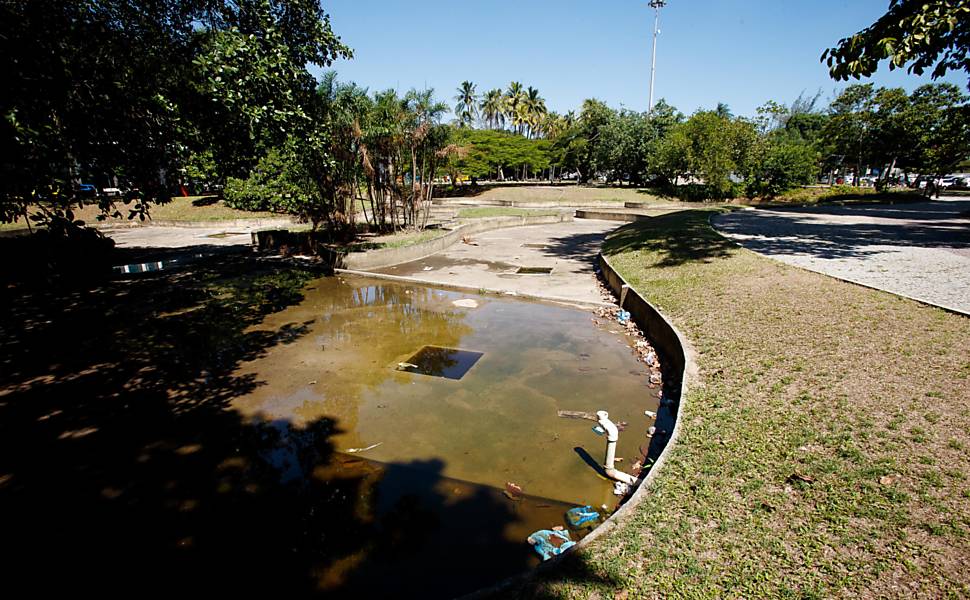Latest Photo Galleries
Brazilian Markets
17h36 Bovespa |
-0,07% | 124.646 |
16h43 Gold |
0,00% | 117 |
17h00 Dollar |
+0,29% | 5,1640 |
16h30 Euro |
+0,49% | 2,65250 |
ADVERTISING
Work of Landscape Architect Burle Marx Under Threat in Rio
04/22/2014 - 08h55
Advertising
LUCAS VETTORAZZO
FROM RIO
Of the 28 works by the landscape architect Roberto Burle Marx (1909-1994) in Rio de Janeiro, at least ten are in a state of disrepair or are being poorly maintained, according to a survey carried out by Folha.
Responsibility for their maintenance lies with various public institutions of the city.
Three of the 28 have disappeared completely: those once located at the car park of the Maracanã stadium, at the Courts of Justice and at the Conjunto Habitacional de Pedregulho, a modernist apartment building in the north of Rio.
The two works in the most serious state of disrepair are found at the Praça Senador Salgado Filho, opposite the Santos Dumont airport, and at the Institute of Pediatrics of the Federal University of Rio de Janeiro (UFRJ), on the Ilha do Fundão.
Both are officially protected by the city government, with the work at Praça Senador Salgado Filho being also listed by the state government.
The lake installed at the latter work, once inhabited by orange carp, has been empty for at least two years. In addition, the lawn has been damaged, trees and bushes need pruning and lanterns, which should highlight plants and monuments, are broken.
The square was Burle Marx's first public project in Rio, and is part of the same project as the Aterro do Flamengo Park, finished in 1965.
According to the architecture firm Burle Marx and Companhia, which looks after the works, a complete maintenance has not been carried out at the park since 2000. This includes pest control and any necessary replanting.
For Isabela Ono, an architect at the firm, the grass is only occasionally mown. Moreover, the space is often used by carnival blocs and street parades, which further damages the garden.
Meanwhile, the work at the Institute of Pediatrics at the UFRJ, which was unveiled in 1953, is a shadow of its former self. There used to be gardens in the form of waves, at the sides of the building and in its internal patio. Today remain only the outlines.
There were once lawns of two different shades of green. These areas are now being used as a car park. In the original project, there were a range of different palm trees, which today compete for space with mango trees and trees of other species which have been planted in the last 50 years.
The destruction of Burle Marx's work is nothing new. The Linha Vermelha, a highway opened in the 1990s to link the north of Rio to the city center, was built over part of the garden near the entrance to the Institute.
The upcoming TransBrasil Bus Rapid Transit system will run parallel to the Linha Vermelha and effectively destroy the rest of the work.
RECOVERY?
The State Institute for Cultural Heritage listed the Praça Senador Salgado Filho in 1990. It conducted an inspection of the work in February, and is urging the city government to restore the square to its former glory.
The Municipal Secretary for Conservation said that it has been working on the restoration of the Aterro do Flamengo Park since last year. These works will continue until the end of the year and include the planting of 11,000 square meters of grass.
The administration of the Institute of Pediatrics at UFRJ said it is considering its options regarding the recovery of the building's gardens.
Translated by TOM GATEHOUSE




